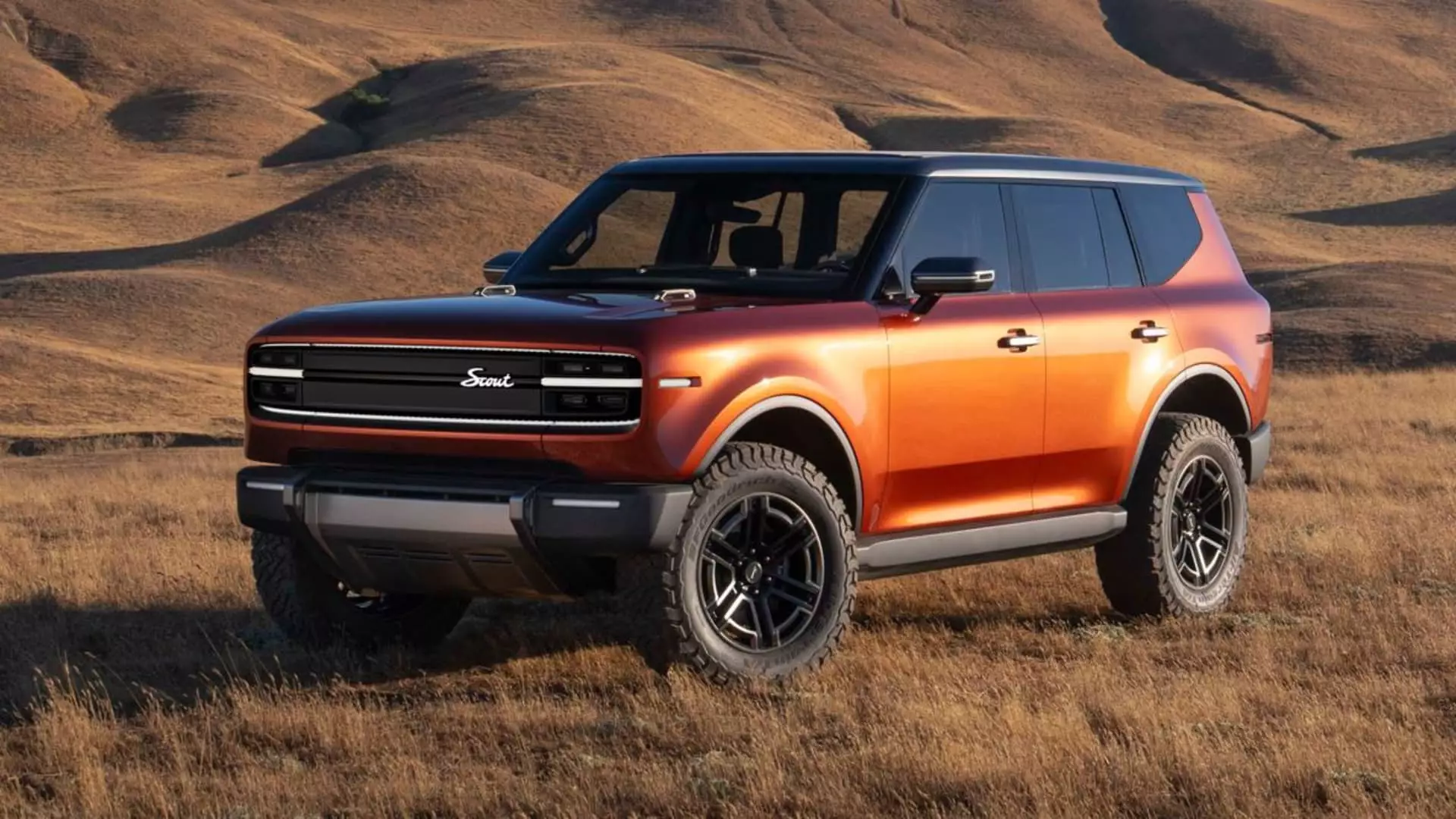Reviving Icons: Scout Motors’ Bold Step Into the Electric Vehicle Market

Scout Motors, once a prominent name in the American automotive landscape between 1961 and 1980, is making a bold return to the market. Backed by Volkswagen, Scout plans to roll out its first lineup of electric vehicles, while also pivoting to include extended-range electric vehicles (EREVs) amidst emerging market dynamics. This strategic shift reflects a keen awareness of consumer preferences and economic realities as the electric vehicle sector continues to evolve rapidly.
Initially, Scout Motors aimed to focus solely on electric vehicles in an attempt to capture the burgeoning EV market in the United States. However, the company has recognized that the pace of EV adoption has not met earlier projections. Rising costs and fluctuating consumer demand have prompted Scout CEO Scott Keogh to embrace a more versatile strategy that incorporates EREVs alongside pure electric models. With EREVs equipped with both electric motors and conventional combustion engines, these vehicles can transition seamlessly between electric power and traditional fuel when necessary. This hybrid approach is designed to alleviate consumer apprehensions surrounding range issues, thereby promoting a smoother transition to full electrification.
Keogh emphasizes the strategic importance of this pivot, labeling it a “smart play” given the volatile market landscape. This adaptability is particularly significant for startup ventures like Scout that must remain nimble to thrive in a competitive automotive environment. By integrating EREVs, Scout aims to solidify its brand while appealing to a wider audience reluctant to commit to fully electric vehicles.
Scout’s initial offerings— a full-size pickup truck and a large SUV—will directly target lucrative segments within the U.S. automotive market that are noted for their profitability. Keogh stated that the vehicles are tailored to cover nearly 40% of market demand for larger vehicles, an approach considered essential for achieving operational profitability within the first year of production. This is an ambitious target, especially considering recent challenges faced by other EV startups like Rivian and Lucid, who have struggled to maintain sustainable profit margins.
With the establishment of a $2 billion manufacturing facility in South Carolina, designed for a production capacity of 200,000 vehicles, Scout aims to streamline its operations and capitalize on economies of scale. This production capability, combined with a direct-to-consumer sales model, deviates from traditional franchised networks and could enhance both customer experience and brand loyalty.
As Scout introduces its Traveler SUV and Terra pickup truck, expectations are high regarding their performance specifications. Positioned against formidable competitors like Jeep and Ford, Scout’s vehicles are engineered to deliver superior performance metrics, including rapid acceleration and exceptional torque. Notably, both models are designed to withstand substantial off-road conditions while providing over 500 miles of range for the EREV and a competitive 300 miles for all-electric variants.
Furthermore, Scout has embraced advanced charging capabilities by utilizing the North American Charging Standard, which promises an efficient 800-volt architecture and bi-directional charging. This technological commitment indicates Scout’s anticipation of evolving customer needs for flexible, high-performance vehicles that can adapt to varying lifestyles.
Though the electric pickup market is experiencing growth, it faces challenges from traditional automotive giants keen to establish their foothold. With the recent surge in electric vehicle production floodgates being opened prematurely by many manufacturers, the market will likely undergo fluctuations as vehicles initially commanded high premiums but are now creatively incentivized to boost sales.
Despite this dynamic, Keogh remains optimistic about Scout’s potential. By honing in on the desirable features, appealing price points, and leveraging the legacy of the Scout brand, they hope to carve out a unique identity in the crowded marketplace. The introduction of competitive pricing and a strong marketing narrative could help Scout capture the attention of a diverse consumer base looking for both affordability and performance.
With reservations for the new models already open and strategic plans in place, Scout Motors is preparing for what they hope will be a successful market entry by 2027. Keogh’s vision extends beyond these initial offerings, suggesting additional models for the brand may follow, tailored to market demands and consumer interests. Scout’s return is not just about reviving a nostalgic brand; it is an opportunity to reshape consumer perceptions of electric vehicles, moving towards a more inclusive and forward-thinking approach.
As Scout Motors reinvents itself, we should watch closely how this legacy brand adeptly navigates the complexities of the evolving automotive landscape, striving to balance innovation with consumer preference amidst growing competition.





